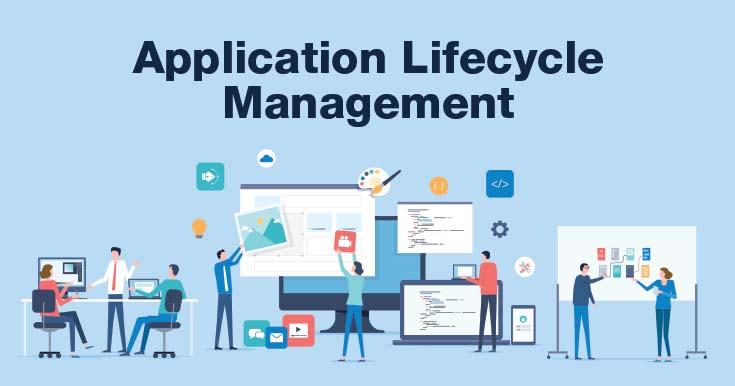What is Pull Request in Git? Definition & How to Create One?

Git stands as a preeminent DevOps tool, paramount for proficient source code management. This version is the most popular control system today, used widely to manage projects of various sizes effectively and efficiently. It aids in tracking changes in the source code, enabling different people to work on different parts of the same program. Git is a recognized approach to contributing to a project collaboratively.
What is Git?
Git acts as a robust version control system designed to monitor changes in computer files. It is primarily used to facilitate seamless collaboration among various individuals involved in a project and track progress throughout the project. Whenever a developer initiates a particular task, a new branch is created in order to make sure that the master branch always has production-quality code.
Git is a valuable tool that not only benefits programmers or developers but is also highly useful for non-technical users in effectively tracking their project files. It promotes alignment among all team members, allowing seamless collaboration on large projects involving a large workforce.
What is GitHub?
GitHub is a web-based service that developers all across the globe use for code storage and collaborative sharing. It differs from Git in that it has a user-friendly graphical interface, which streamlines the version control process. PR in Git Hub enables project contributors to collaborate from any location, easily access project files, and seamlessly integrate their changes into the project’s master branch.
GitHub acts as a centralized hub for project managers and developers to collaborate, oversee, and refine their tasks, ensuring project transparency and timeline adherence. Furthermore, it allows the publication of packages with privacy options, allowing for private distribution within the team or public dissemination for the benefit of the open-source community.
What is a Git Pull Request?
A pull request, also known as a PR, is a formal request to merge changes made in one branch of a repository into another, typically transitioning from a feature-specific branch into the primary branch. Pull request in GitHub are important because they play a crucial part in promoting rigorous code evaluation, fostering collaborative efforts, and ensuring the maintenance of a structured and well-documented codebase.
Pull Request Examples:
- Feature Additions: A developer introduces new functionality, such as a password reset feature, and initiates a pull request for merging it into the main branch upon obtaining approval.
- Bug Fixes: A distinct branch is established to address an identified bug, and subsequently, a pull request is generated for team assessment and subsequent integration.
- Code Refactoring: Developers refractor code and submit a pull request for team approval for improved performance and readability.
- Dependency Updates: A pull request in GitHub updates the dependencies of the project to the latest versions after reviewing them for compatibility and improvements.
How to Create a Pull Request in Git?

The process of generating pull requests can differ among organizations, contingent upon the tools in use and the repository type (e.g.: GitHub). Nevertheless, typically, creating a pull request encompasses these three fundamental components.
Drafting
A draft pull request in Git cannot be merged until the developer has marked it as ready for review.
When initiating a pull request in Git, developers start with a draft where they provide a concise title and description of their code changes. They specify whether it’s a new feature or bug fix, along with the source and destination repository/branch. A draft pull request becomes mergeable only after it’s marked as “ready for review” by the developer.
Merging
Merging happens after a developer’s pull request is approved by the repository maintainer. Before merging, the maintainer reviews the work, provides feedback, and requests edits if necessary. Once all updates are addressed, the maintainer can safely merge the changes into the main project repository, making it live for end users.
Updating
If the repository maintainer requests code changes before merging, the developer receives feedback. After resolving the issue, they update the pull request with new commits for further review and approval.
Template of Pull Request in Git
Creating and string pull requests streamlines the process and maintains consistency among team members. When crafting these templates, remember to include the following:
- Summary of Code Update: Summarize whether it’s a bug fix or a new feature and what the code update accomplishes.
- Unit Test Cases: Confirmation of unit testing across different devices and browsers.
Your pull request in git template will adapt to your organization’s repository. Various tools offer different features to simplify pull requests for your team. When initiating a new pull request, the template content will automatically appear in the description field for your convenience, as illustrated below.
Importance of Git Pull Request
Whether you are involved in the front-end or back-end of a project, pull requests are invaluable in streamlining the code review process within a collaborative team environment. Pull requests have many benefits, and this section discusses them.
Facilitates collaboration
Effective collaboration is crucial for a successful team, even when handling different project aspects. Pull requests enable changes without disrupting others’ work, facilitating the exchange of insights and code enhancements among team members.
When uncertain about a code change, submitting a pull request for feedback yields valuable suggestions. Experienced engineers should review and approve or reject changes to catch overlooked issues. To prevent bottlenecks, it’s vital for those managing pull requests to establish clear review time expectations, ensuring project progress.
Builds features faster
Pull requests serve as a potent tool for accelerating feature development within teams. They enhance communication of code modifications through review and commentary.
To begin, they empower developers to submit changes independently, eliminating the need to await project maintainer approval. This fosters parallel work, expediting development.
Moreover, pull requests facilitate comprehensive reviews and allow for comments. Reviewers may seek clarifications or address potential issues, utilizing comments for sharing resources.
Lastly, pull requests facilitate the seamless integration of changes into the project, expediting the creation of new features.
Reduces risks associated with adding new code
Programming code inherently carries risks, as each addition may introduce bugs and vulnerabilities for end users. Prior to merging a pull request into the main codebase, team members review changes to maintain coding standards and address potential issues, preventing problems in the live code. Pull requests serve as a safety net, allowing easy rollback in case of unexpected problems.
Improves code quality and performance
Creating a pull request in git involves soliciting code review and feedback from others, enhancing code quality through collaboration. Descriptive commit messages and detailed explanations in the pull request aid reviewers in comprehending your changes.
Also, it allows for the resolution of disagreements or concerns regarding code modifications. Reviewers can raise issues within the pull request in git, affording the opportunity to address and rectify potential problems early, ultimately bolstering code qualify significantly.
FAQs
Pull requests request the merging of code changes, typically from a feature branch to the main branch, while a push is an action to upload local code changes to a remote repository.
To approve pull request in GitHub, review the changes, add comments if required, and click the “Approve” button if satisfied with the code.
To edit a pull request in GitHub, make changes to the branch associated with the pull request and push the modifications; the pull request will automatically update.
To delete a pull request in GitHub, click the “Close” button on the pull request page, and then confirm the deletion.
To remove a commit from a PR in GitHub, amend the commit locally, force push to the branch, and the pull request will be updated automatically.




